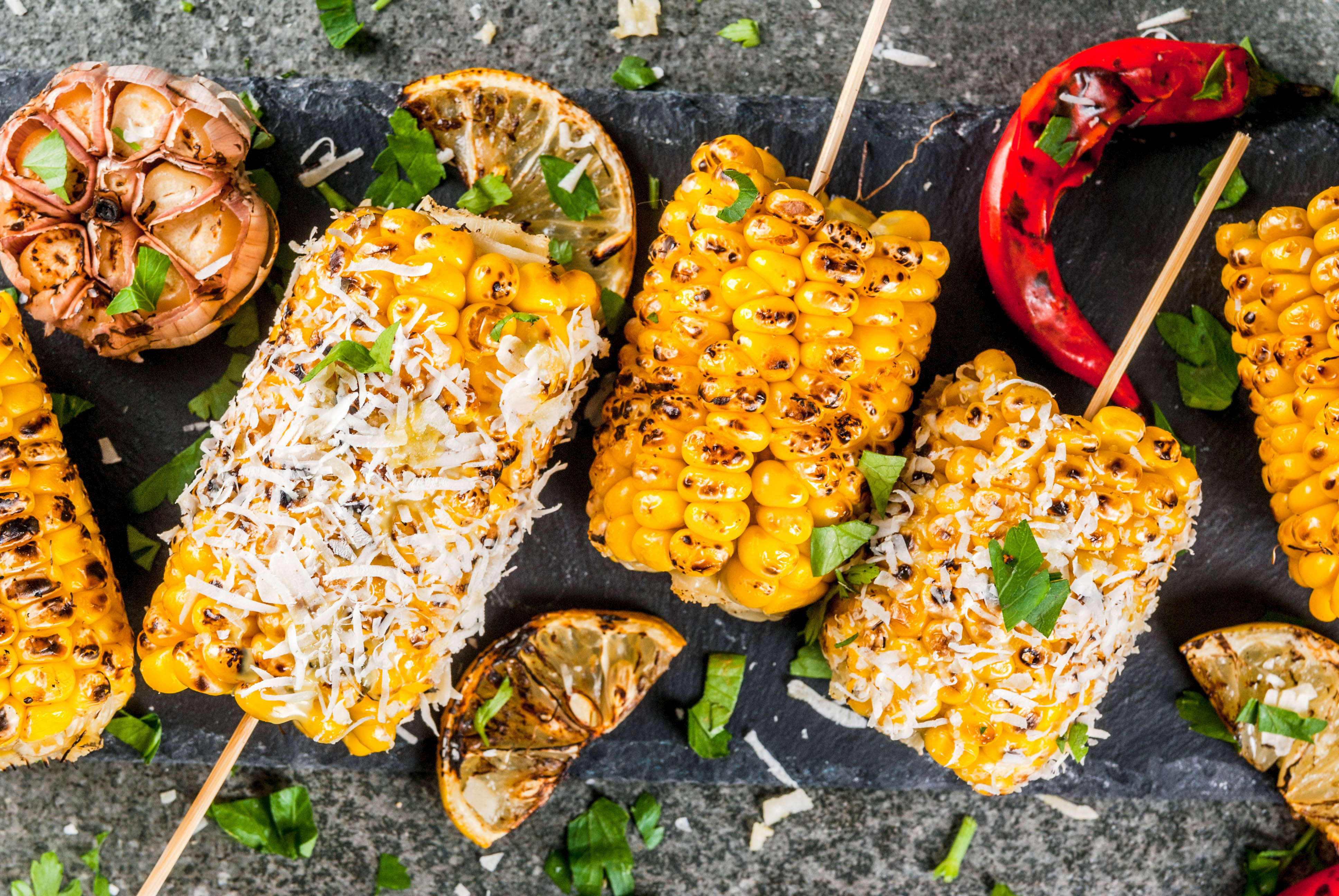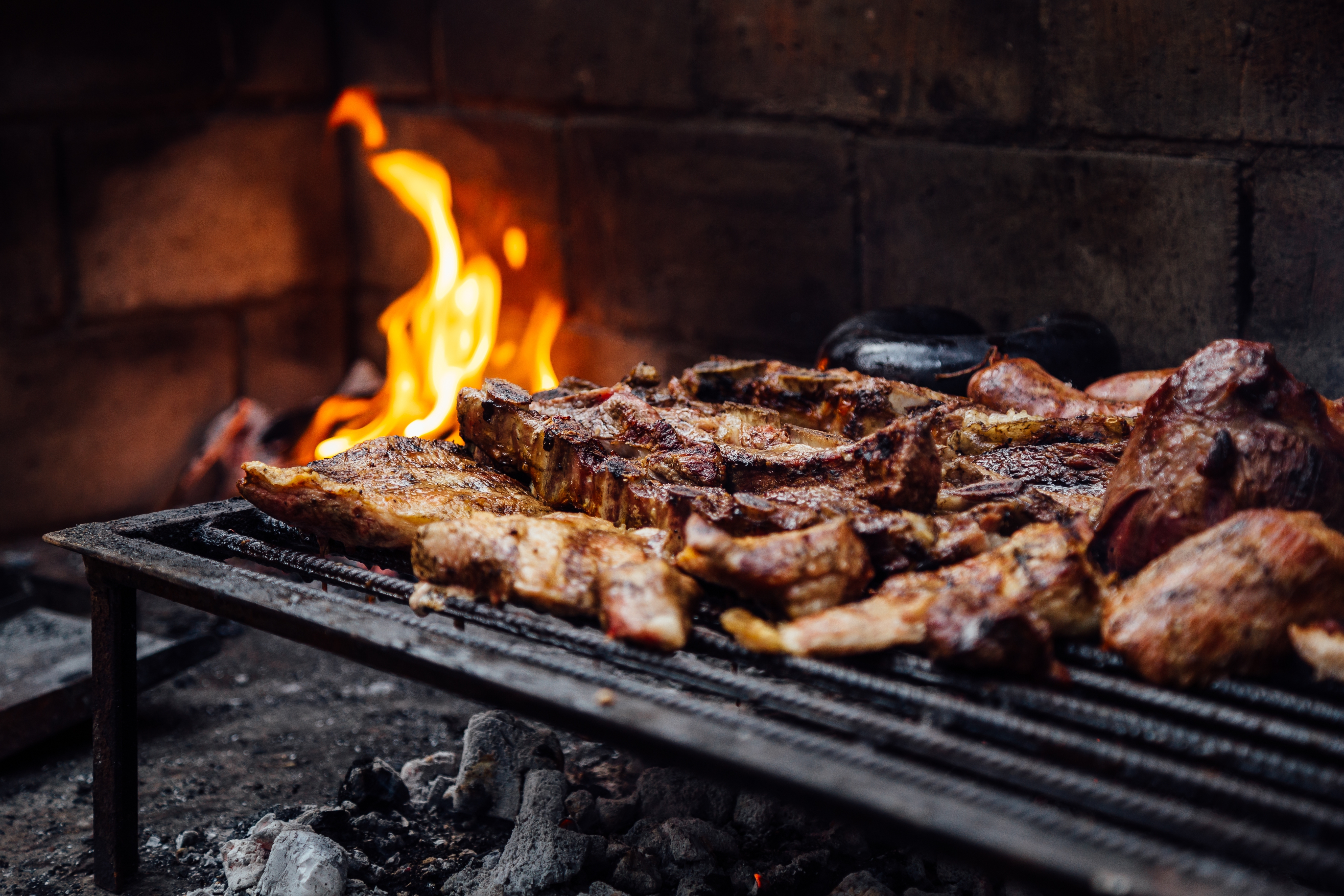Free digital copy
Get Speciality Food magazine delivered to your inbox FREE
Get your free copy
Every year, BBQ season rolls around like delicious clockwork. At the first sign of temperatures rising British consumers are dusting down their outdoor cooking kit and prepping their favourite summery dishes. Some dishes – burgers, hot dogs and potato salad – are stalwarts, so it’s worth stocking high quality ingredients so customers can indulge in these family favourites, but there are plenty of other delicious options on the menu in 2025.
Of course, as well as the conventional meat-heavy options, be sure to sell options for the customers – and their guests – who follow vegetarian or plant-based diets; these days there’s a whole host of formats and flavours to explore. Also, don’t sniff at barbecued vegetables, especially those that have been boosted with a flavour-packed rub or marinade. These will go down well with everyone, whatever their dietary preferences.
This year, shoppers are hungry for options. “Indie retailers need to look beyond the obvious this barbecue season because people are expecting variety more than ever and they’re looking to the independents to provide that extra special something,” begins Tara Mei, founder of wholesaler Mahalo. “We’ve moved on from meat rubs and plant-based cheese. This season is all about variety, from world foods to innovative condiments.”
Trending world flavours such as those hailing from Korea or Malaysia are bound to be popular with shoppers seeking new taste experiences. “Indies can set themselves apart this BBQ season by championing world flavours. Gochujang, peanut rayus and kimchi ketchups are making great strides as people search for authentic flavours from different cuisines,” Tara continues. “Eye catching packaging plays an increasingly important role as people want interesting bottles and conversation openers on their tables.”
Tara recommends Makan Malaysia’s Sambal Belacan (“normally quite hard to find, great to see a British brand”); Peat’D Peat Smoked Tomato Sauce, which has been made with smoked tomatoes for an incredibly rich, deep and complex flavour; Goat Rodeo Goods’ Hell Or High Water Hotdog Pickles (“it’s not just about the meat, people are just as keen to explore the accoutrements”); Flavour Bombs’ Seafood Boil and Builin Blasta’s Smoked Onion Mayo.

For Maria Whitehead, director of Hawkshead Relish, it’s time to widen the net beyond classic barbecue items and embrace summer as the season of outdoor cooking. “People are veering away from traditional burgers and sausages and looking for things that are a bit different that they can cook on their barbecue. I even cook paella on the barbecue!” she begins. Multi-purpose products such as their Original Black Garlic Ketchup – great as a marinade and accompaniment – and Sticky Chilli Marinade – delicious with ribs and chicken wings, or as a dipping sauce – are the name of the game; avoiding wastage as well as ensuring tasty dishes all round.
“People are interested in playing with flavours, but there are still a lot of people who have cupboards full of things they don’t know what to do with,” Maria continues. “So we’re investing in travelling around to our stockists to run demonstrations, so that people can see for themselves how our products can be utilised.”
New on the Hawkshead Relish horizon – and perfect for outdoor cooking – is Kimchi Ketchup; an ambient product inspired by Maria and Mark’s travels to Japan and Korea late last year. “It’s launching at the Farm Shop & Deli Show,” she says, “and we’re very excited about it! It has the tang that you want from kimchi and layers of flavours, but has a smooth texture so you can use it in dishes such as Tom Yum soup, or add cabbage if you want that texture. In our opinion it’s got the perfect mouthfeel and lingering taste that we love about conventional kimchi, but as an ambient product.”

When temperatures rise, so does the consumer appetite for punchy flavour – and The Garlic Farm’s selection has this in droves. “Whether you’re cooking up a simple grill or a full spread with a plethora of sides, The Garlic Farm collection can add garlicky flair to your outdoor get-together,” begins Barnaby Edwards, director. “Our flavour-packed dressings, dips, pickles and sauces range from cook-out classics ketchup and barbecue sauce, to spicy pickles, hot sauces and garlicky butters – so your great British BBQ can be as simple or elaborate as you wish it to be.”
Versatility is the name of the game at any time of year, but really comes into its own during the summer. Barnaby’s recommendations? “Our Garlic Butter with Parsley, Thyme and Black Pepper is well known for pairing beautifully with grilled sweetcorn, and a drizzle can really elevate a vegetable skewer. Garlic Jam with Chilli is brilliantly versatile and adds a punch of sweet spice to a classic beef burger or grilled chicken. Our Toasted Garlic Mayonnaise works wonderfully stirred into a potato salad or coleslaw.”
No BBQ spread is complete without flavourful rubs and marinades, and Field Blends’ range – complete with tried and tested flavour combinations – is ripe for foodie exploration this summer. “We try not to make too many specific pairing suggestions as we want the tins to inspire impromptu flavour combos on the campsite and kitchen,” begins Connor Field, director.
“I don’t think sweet and spicy is going anywhere. Hot honey has been doing the rounds for some time but I still think it’s going to be huge for 2025. We have our Maple Chilli Salt, where smokey chipotle and organic dried maple just pop off together and I honestly just eat it straight up on buttered bread sometimes.”
Corn on the cob, charred on the barbecue, is a great vehicle for seasonings. “Charred corn with maple chilli salt sounds amazing! We’ve mixed up a maple chilli butter to glaze things like that before. You could also pretty much burn (or one might say delicately char) some leeks on an open campfire and hit them with our Lemon Sumac blend for a fresh and zingy hit on the smoky sweet leek.
“Our Coffee BBQ blend it adds an amazing crust to slow cooked meats, while the Soy, Ginger & Sesame blend can be used as a quick instant noodle finisher to take it up a level, or as a marinade on mushrooms/poultry if you want to put more time into it.”
Karl Arneberg, managing director of Auguste Noel, reveals this year’s BBQ-ready top sellers
We stock a wide variety of products and brands ideal for barbecues, but our most popular BBQ sauces come from the award-winning US manufacturer, Sweet Baby Ray’s. As their tagline says, “The Sauce is the Boss!” – and it truly is, offering a delicious flavour that pairs perfectly with almost anything.
In addition, we carry staple condiments from well-loved UK brands such as Wilkin & Sons and Mrs Darlington’s. These provide the essential table sauces you’d expect. Of particular note within the Mrs Darlington’s range are some personal favourites: her Spicy Tomato & Sticky Onion Chutney, which is a perfect match for sausages and burgers, and her Pickled Baby Onions, which are a staple in our household. These tangy little treats are incredibly versatile and complement a variety of meals.
The UK fine food sector is constantly evolving, with new global flavours making their way into the market. In 2025, we are excited to launch a range of authentic Greek products from Mikos, bringing traditional grilled Souvlaki – whether chicken, lamb, or vegetables – straight to UK homes and BBQs. This range includes authentic Greek pitta breads, seasoning mixes, gyros sauce, and chili sauces, all designed for easy use with no prep work required. Having personally tried these products, I can vouch for their quality and taste. The owner, Hugo, even set up a BBQ in our car park for us to experience the range firsthand, and it was absolutely delicious!
Additionally, we’re importing a fantastic selection of mustards, condiments, and pickles from Bornibus in France. A standout item is their Cornichons, which are wonderfully crunchy and make a perfect BBQ accompaniment. For condiments, there are some exciting flavours to try, like ‘Aioli’, which is great as a dip for raw vegetables or as a topping for burgers and chicken. And for a real twist, why settle for regular mayo when you can try Summer Truffle Mayonnaise? This rich, creamy mayo infused with subtle truffle umami is the perfect pairing for grilled meats and vegetables.
Over the last 12 months, we’re definitely seeing a shift towards more diverse flavours on BBQs. Personally, I’m a fan of using Kikkoman Soy or Teriyaki as a marinade or glaze – they’re incredibly versatile adding a rich umami flavour to grilled fish, meats, or vegetables.
Hot sauces remain a key trend, we offer a fantastic range of spicy sauces from El Yucateco offering a fantastic range of Mexican sauces that bring both heat and depth to any BBQ. From smoky chipotle to tangy green habanero, these sauces enhance the flavour of meats and vegetables alike.
Jack Godik, executive chef at Sucre shares his favourite BBQ serves
Nothing beats a hefty beef ribeye on the bone to impress your guests. Sweetcorn also has to be one of my favourite vegetables to grill, as well as aubergine as it takes on the smoky BBQ flavour so well. Asparagus is also one of my favourites when in season.
There are two sides that I always serve when I’m hosting a BBQ. Elotes, this is a classic Mexican streetfood dish which is corn on the cob charred on the grill and smothered in a cheesy, spicy sauce. Super easy to make and so delicious. The other is romano peppers (or normal red bell peppers) blackened on the grill. Then peeled and dressed with some moscatel vinegar and a good olive oil.
My favourite marinade whenever I’m grilling chicken involves a version of a miso marinade. If I’m feeling time pressured, I’ll just smother the chicken in miso and leave it in the fridge for a couple hours. To make it more interesting you can add things like preserved lemon, rosemary and garlic.
Lord Newborough of Rhug Estate explains how the estate’s retail team are approaching BBQ season this year
Our top-selling BBQ-related products in summer include marinated chicken kebabs, spare ribs, steak boxes, and gourmet burgers. These items are incredibly popular due to their ease of preparation and suitability for outdoor cooking, which aligns perfectly with summer gatherings.
This season, we are keen on capitalising on trending flavours such as spicy and smoky BBQ sauces and marinades, as well as plant-based alternatives to cater to the growing vegetarian and vegan market which are offered at our takeaway in the farm shop. Additionally, we are offering specials cooked and presented by our chef in the farm cafe at Rhug Estate.
Effective selling techniques for BBQ products include engaging in-store displays that highlight our bestsellers, offering samples, and utilizing seasonal promotions. Point-of-sale (POS) materials featuring recipe ideas and pairing suggestions create excitement and encourage impulse purchases. Social media promotions and interactive cook-along events also enhance customer engagement and drive sales during the peak BBQ season.